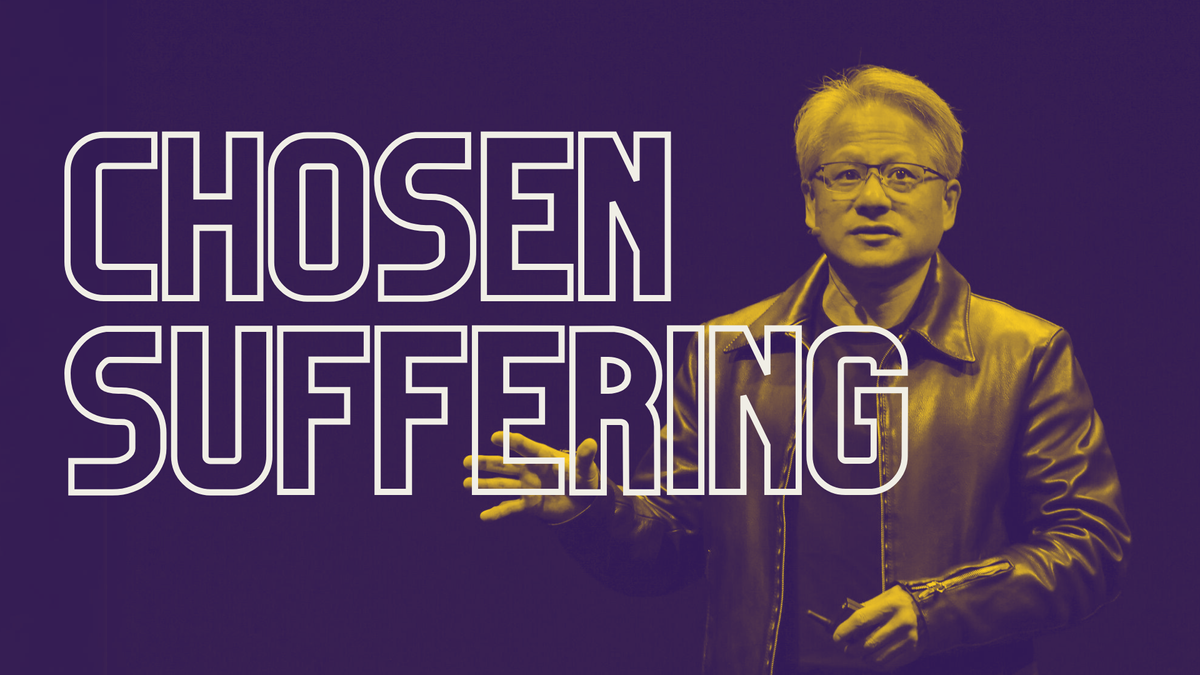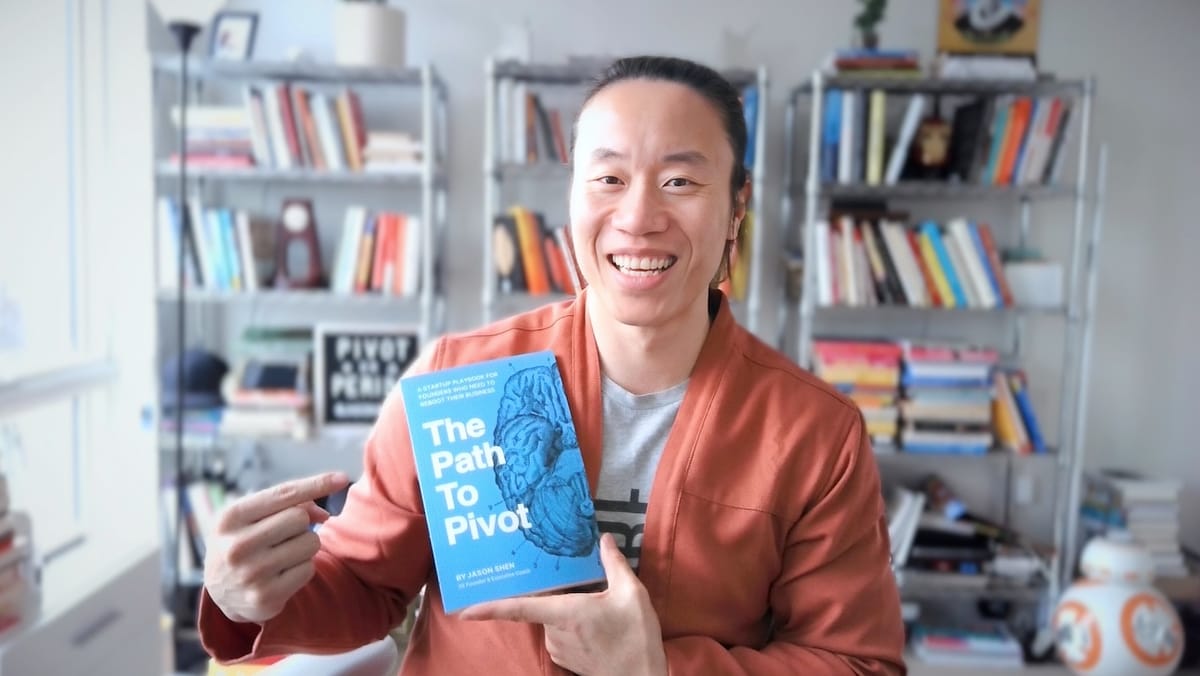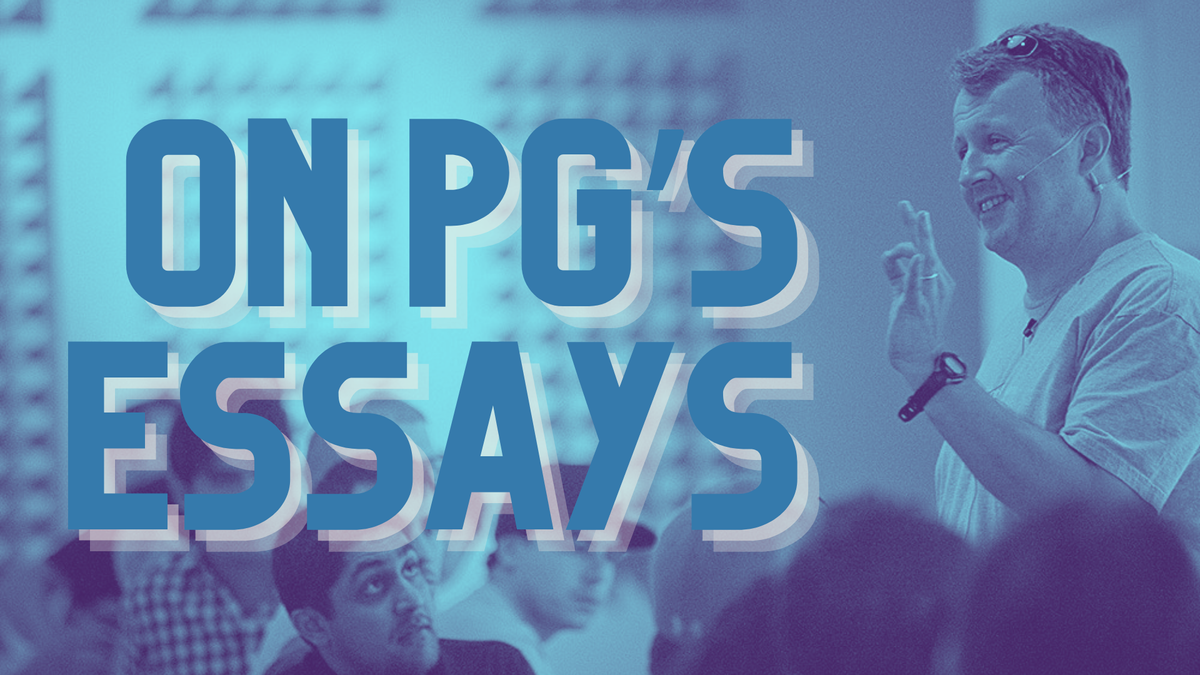Spring is finally here in NYC and it's gorgeous! I hope the weather is getting milder and walks outside more comfortable where ever that might be for you.
I'm two-thirds the way into my "30 days of pivoting" for my book The Path to Pivot which I announced in #195. And with an Interintellect salon coming up, I figured it wouldn't hurt to share the Introduction to the book as a teaser for the whole thing.
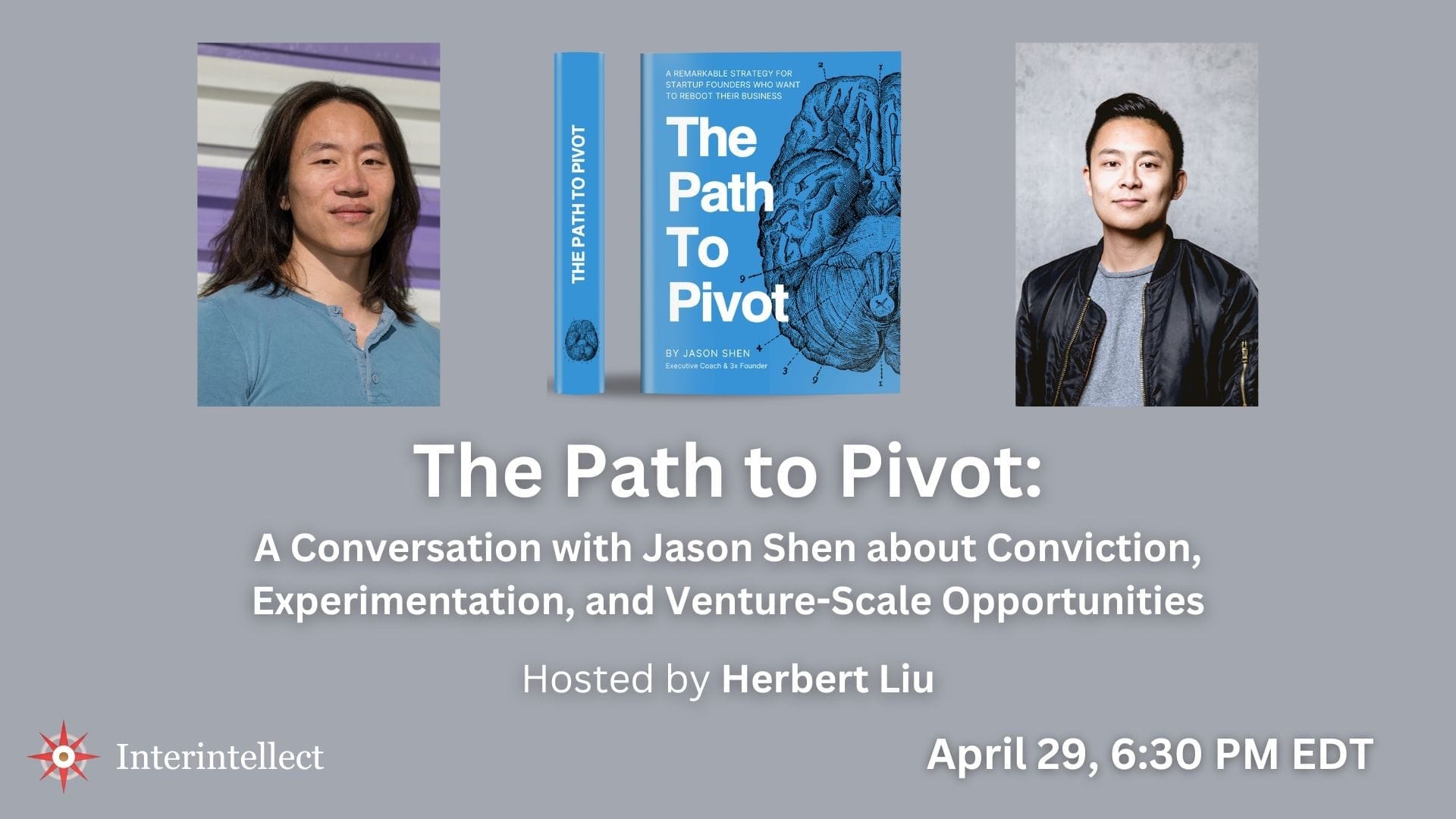
The Path to Pivot Interintellect Salon: Conviction, Experimentation, and Venture-Scale Opportunities
3x startup founder turned exec coach Jason Shen joins creativity expert Herbert Lui for a conversation about how venture-backed startups navigate the uncertain leap from one direction to another in his new book The Path to Pivot: A Startup Playbook for Founders Who Want to Reboot Their Business.
Hope you can join me for the salon and pick up the book if you find it interesting!
The Path to Pivot: Introduction
The highest and lowest moments of my first startup venture were barely a month apart.
In August 2012, my team and I were part of a Vanity Fair cover article photoshoot alongside the Dropbox founders and the partners of Y Combinator (YC) with the headline “Who Wants to Be a Billionaire?”
A year earlier we had launched our company Ridejoy out of the Silicon Valley accelerator with a long-distance ridesharing service. Back then Lyft didn’t exist yet and Uber was an app for getting limos in San Francisco.
A journalist was embedded in our YC batch of summer 2011 to write a book about the world’s most successful accelerator. They featured Ridejoy’s story on the very first page. Vanity Fair was running the first chapter of this book as an excerpt hence why we got to pose next to Silicon Valley royalty as the rag tag team of young upstarts.
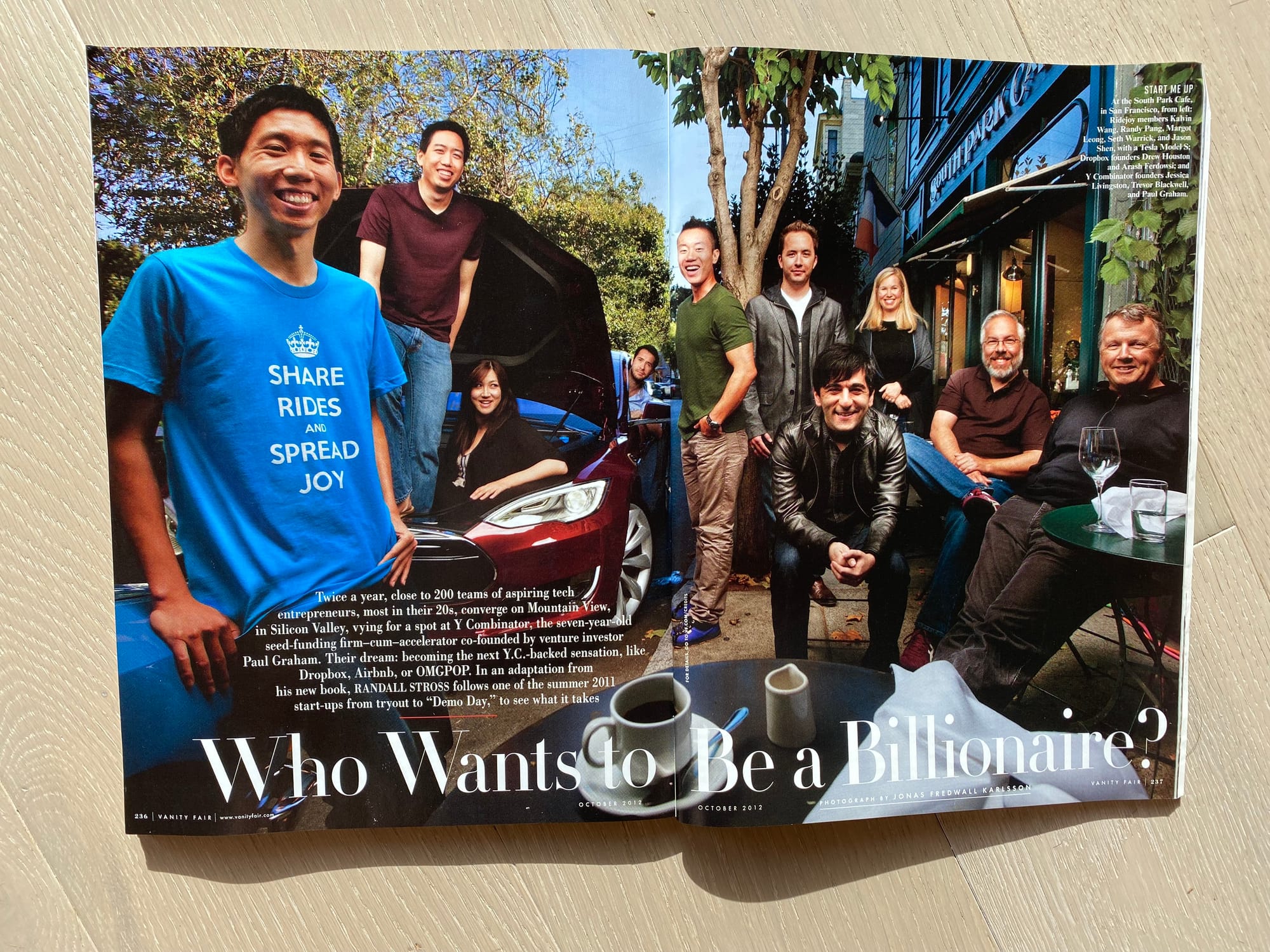
Beyond this ego-stoking experience, we had also just launched our iOS app after 7 months of development and it had quickly been featured by App Store editors as an eco-friendly way to travel. We were soaring high and the future looked bright.
Just a few weeks later, we were crashing back down to earth. Our only effective growth channel, Craigslist, had threatened legal action to keep us from siphoning users off their platform, and we needed to make some big changes.
My cofounders and I tried to explore adjacent opportunities in the travel space. When that exploration went nowhere, we were forced to lay off the team to preserve cash and retrench. We spent eight months jumping from idea to idea, unable to agree on a direction to start building.
We didn’t run out of money—we ran out of resilience.
I remember huddling over the phone with my cofounders as one of our investors, Garry Tan, now President of Y Combinator (gulp) chewed us out for wanting to give up. “Do you know how many founders would kill to be in the position you’re in?”
We should have been able to pull off a pivot, but we failed. If I had known what I know now, I wonder if things would be different.
This book is written for founders and CEOs of venture-backed startups contemplating”or in the middle of”a major shift in their business.
If that’s not you, that’s cool. Maybe you’re an indie hacker, corporate executive, or angel investor. There is still something here for you, but I would recommend you to tweak the advice as needed.
I’ve taken my own advice and written for a specific niche: the early / mid stage startup funded by VC dollars. My target reader is the person in the arena, face marred by dust, sweat, and blood, facing a tough decision. This book is for you.
When conviction fades
Dear founder:
You’ve probably been in business for a few years, having built a modest level of traction. A good number of consumers or companies use your product—maybe you’re even generating meaningful revenue from these customers.
You’ve raised a few million in venture funding, made a name for yourself in this space. On the outside, you look like a successful company. Your friends and family have been following your journey with enthusiasm.
Despite all your external success, you’ve got a problem. A nagging doubt in the back of your head, speaking in a whisper or perhaps even a shout, that you’re going down the wrong path.
You’ve missed major milestones you’ve set for the team and the gap seems to be growing every day. You’re watching your bank account drop without knowing how you’re going to raise more money.
Maybe you’re having trouble sleeping. You’ve got a perpetual tightness in your chest. Headaches that knock you out for hours. A distinct lack of appetite or enthusiasm for even your favorite things.
Conviction is one of the most important and powerful assets a founder can possess. It’s what inspires your team, recruits new customers and employees, wins deals, and lands new investment. But these days, your flame is getting weaker and dimmer each day. Intrusive thoughts are popping into your head:
- Do I really have what it takes to succeed as a founder?
- Would my investors freak out if I tried to radically change the business? What about my team?
- Why the hell did I quit my job to chase this dream?
Whether you came across this book via a desperate search for an answer out of this predicament or because someone you trust recommended it to you, rest assured: you’re in good hands.
Over a couple of short, actionable chapters, I’m going to share a practical framework for rebooting your business, without burning all your bridges or imploding your business in the process. Because I’ve done it.
The tale of two pivots
I wrote this book as a resource I wish I had when I was building my companies. Everything about a startup is hard but pivots are particularly uncertain because there’s such a wide range of opinions and anecdotes about how.
I attempted a pivot in my first startup and failed, ultimately shutting down due to our inability to commit to a new direction.
My second startup also hit a point where a pivot was necessary. This time, I avoided the mistakes we made the first time and successfully navigated through the pivot, raised new funding, and eventually landed a modest acquisition by Facebook.
Pivot 1: Failing out of fear
Despite warnings from Paul Graham that ridesharing was a bad business because the market would be limited to people who were extremely cost-conscious, my cofounders and I launched Ridejoy at Y Combinator Summer 2011 Demo Day. We were thrilled to raise $1.3 million for our long-distance ridesharing platform, which was about average for YC back then(Though some of our peers like Codecademy, Parse, and (Rap)Genius raised far more).
We launched as a carpool service for Burning Man and got 1,600 users without spending a dollar on advertising. Things were looking great. But there was a problem — while we easily acquired users through Craigslist, we struggled to gain traction from other channels like events and partnerships and couldn’t inspire word of mouth. Our Ridejoy iOS app also failed to drive growth despite an initial press spike and getting featured by the App Store editors. Then, Craigslist sent a cease and desist for letting users post back to their platform—our growth hack was toast.
With no clear path to Series A, we tried pivoting but the process was chaotic and our employees were clearly rattled and unprepared for such a sudden shift. We let our team go, gave up our office, and retreated to our shared apartment to find a new direction. We had built a warm, close-knit culture with home cooked meals at the office and watching our employees cry on our last day as a team was one of the worst feelings I’ve ever experienced.
We struggled to come up with a new direction. I cringe at our ideas now: a social media platform for sharing thoughtful quotes, a tool for pooling donations to charity, a laundry delivery service.
As privileged twenty-somethings with little business or life experience, finding “big problems” that we were uniquely qualified to solve felt next to impossible. Garry Tan saw it differently. “Just call up some YC companies, ask them what problems they have, and go solve those!”
We were naive and thought that we could dream up an idea out of our living rooms. We were wrong.
Without a structured framework, a deadline, or any real accountability, we were stuck. We ultimately returned nearly six hundred thousand dollars back to our seed investors.
Result: Failed pivot, business shut down
Pivot 2: Succeeding through scrappy execution
Nearly five years after the Ridejoy debacle I founded a new company called Headlight with an engineer I worked with at Etsy. We wanted to reinvent the hiring process by making it easier for companies to assess a candidate’s technical skills via a timed take-home assignment. After raising a small pre-seed round, we landed a handful of customers for our initial software product.
Following market demand over the next year, we found ourselves operating more-or-less a technical recruiting agency rather than a tech platform. My cofounder and I felt like we were no longer building a venture-scale business and wanted to shift gears.
When our lone in-office employee went to a conference in Europe, we took a week to map out new directions we could take our business that we presented to a small group of trusted advisors. One area that excited us was gaming—my cofounder Wayne had been a Diamond ranked Starcraft 2 player and worked at Bloomberg Sports, an analytics platform used by professional sports teams. I was more of a casual gamer but loved the growing competitive scene in professional and collegiate esports, which reminded me of my own experience as an NCAA athlete.
Throwing away our brand, product, and market position was painful, but we let our conviction guide us. Despite our lack of experience or relevant product offering, we pursued a hard pivot in the gaming and esports space.
We renamed the company Midgame, raised new capital from Techstars, Amazon, and Betaworks, recruited a new team, and built several analytics and proto-AI powered products that were used by collegiate and professional esports teams as well as consumer gamers. It was thrilling to build in a new space, going from B2B to B2C and avoid the stallout that Ridejoy suffered from.
That said, we struggled in other ways: raising a new round with a crowded cap table was tough and our lack of experience in consumer growth marketing held us back. In the end, we weren’t able to hit product-market-fit with any of our product offerings.
After the pandemic hit, investor funding dried up right as we needed to raise more capital. It was a tough break, but we solicited offers from several companies before taking an acquisition offer from Facebook to bring our team into the social media giant.
Result: Successful pivot, business was acquired
Note: There’s more to my pivot stories but rather than get too into the weeds now, I’ll share the details as they become relevant in the pages to come.
From gymnast to founder to coach
I grew up in a home full of coaches & educators: my dad worked in education policy and founded a local Chinese language school, while my mom was a gymnastics coach and Chinese teacher. I got little exposure to business through them, but lots of exposure to developing human potential.
As a competitive gymnast, I was transformed by coaches who challenged me and nurtured my latent talent—it was my gymnastics prowess that got me a scholarship to compete for the gymnastics team at Stanford. I left 5 years later with a masters degree, an NCAA championship ring, and a newfound passion for entrepreneurship.
During my Headlight/Midgame days, I started working with an executive coach (shoutout Hamilton Chan!) who helped me stay grounded through the journey, especially in hard periods like the pivot and the acquisition.
At Facebook (now Meta), I worked across a number of product teams, starting with knowledge and documentation tools meant to drive productivity among internal tech teams. Eventually I made the switch to the consumer side, building experiences on Facebook Groups that reached hundreds of millions of users every day.
A year into Meta, I started my own coaching practice on the side working with founders, engineers, UX researchers, even other coaches. I found myself more fired up about working with my clients than any of my projects at work, dare I say even more than being a founder myself.
I learned a ton at Meta about building products at scale and leading in a complex environment with a ton of different stakeholders and competing interests. But after three tumultuous years where the company rebranded and renamed itself, saw its stock price fall 76% in a single year, and let go of tens of thousands of people across multiple layoffs and reorgs, I had had enough.
I wanted to try something new and connect to a mission that really mattered to me. In June 2023, I resigned from the company to coach full-time and write the first version of this book.
There are a lot of anecdotes about startup pivots, but nothing that comprehensively helped founders go from pre-pivot to post-pivot. I’ve always admired books like The Lean Startup, The Hard Thing About Hard Things, and The Mom Test. Books that offered tangible lessons for startup founders based on the author’s experience in the trenches. Resources that have stood the test of time and are passed from founder to founder.
After looking for such a book around startup pivots, I found nothing. So I decided to write one that might someday join that pantheon of books. Only you as the reader can judge whether I was successful in my goal.
Working with me
Through my advisory firm Refactor Labs, I offer 1:1 and group coaching to help ambitious outliers. Since going full-time, I now support between 12-15 founders, senior leaders, and high-variance achievers in New York and San Francisco. We work together to unlock their full potential, lead through difficult transitions (e.g. pivots, exits) and put a dent in the universe.
If after reading this book you think 1:1 coaching would make a difference for you, email me at jason@jasonshen.com.
But let’s talk now about a misconception that some founders have about pivoting.
Pivots are smart, not shameful
Some founders have it in their heads that pivoting means they were wrong, that they made a mistake with their first idea and that they’re a failure somehow. Nothing could be farther from the truth.
Here’s a quote from Kevin Systrom, who pulled off one of the most successful pivots of all time, Instagram:
“Far too many people, because of ego, stick with ideas far too long and it ends up really poorly. And the entrepreneurs that I've seen do very well are the ones that are equipped and engaged in the change from something that's not working to something that is.”
And again from seed investor and Y Combinator founder Jessica Livingston, who interviewed dozens of founders for her seminal classic Startups At Work:
“Founders need to be adaptable. Not only because it takes a certain level of mental flexibility to understand what users want, but because the plan will probably change. People think startups grow out of some brilliant initial idea like a plant from a seed. But almost all the founders I interviewed changed their ideas as they developed them.”
So not only are pivots completely normal and not a sign of failure, but in fact the ability to adapt your plan in the face of new information is crucial to success as a founder.
Plotting the path to pivot
The main idea of this book is simple:
If your startup isn’t working, don’t wait until you’ve got just a few months of runway left to make a desperate gamble on a new direction. Instead, think about pivoting sooner, and slower so you can make the best decision and bring everyone along with you.
This book is broken into three major sections:
- Pivot Blueprint: This is the heart of the book, focusing on the strategy and mindset you need to make the leap from a stagnant business to one with a path to exponential growth. These six chapters cover the Align-Explore-Commit framework, the idea of a pivot pilot, how to make the final decision choosing to pivot, and explaining the decision to customers, team members, and investors.
If you only get through this section of the book, you will already be far more equipped to make the leap.
- Pivot Toolkit: In this section, you will find practical strategies and actionable steps to execute your pivot with confidence and impact. We cover getting stakeholder buy-in, managing the finances, navigating the idea maze, and staying resilient.
Feel free to skip around, read out of order, and focus on the chapters that are most relevant to your situation.
- Appendix: Here you will find some supplemental information, including some calculations about Venture Math and why you need to swing for such a massive result, and a set of detailed case studies of successful pivots.
I’ve tried to make each chapter concise and self-contained while including stories of successful pivots by companies you’ve heard of, and ones you haven’t.
Countless entrepreneurs have been right where you are: unsure of your direction but not ready to give up. It’s not too late, but there’s also no time to waste. Let’s get started.
That's it for this week. Thanks for reading and stay tuned for next week's issue!
—Jason
PS - In case you missed it, I synthesized two fundraising workshops run by SVB and Carta into a fun infographic here

How I Can Help You
🧢 Executive Coaching: 1:1 coaching for outlier founders & executives that unlock transformational growth over 4+ month engagements (schedule a call)
📘 The Path to Pivot: A playbook for startup founders who want to reboot their business and get a second chance to swing big (get a copy)
🛠️ Participatory Workshops: Interactive seminars designed to learn and practice crucial skills for navigating complex transitions—storytelling, emotional intelligence, experimentation and more.
🎤 Keynote Talks: High energy presentations that challenges audiences to dream bigger and act bolder in the pursuit of excellence.
Coming soon: Templates, exercises, and other low-cost ways to build resilience and develop your outlierness.
Recent Issues
